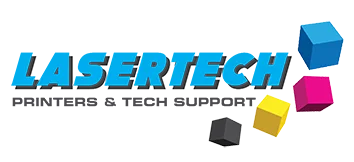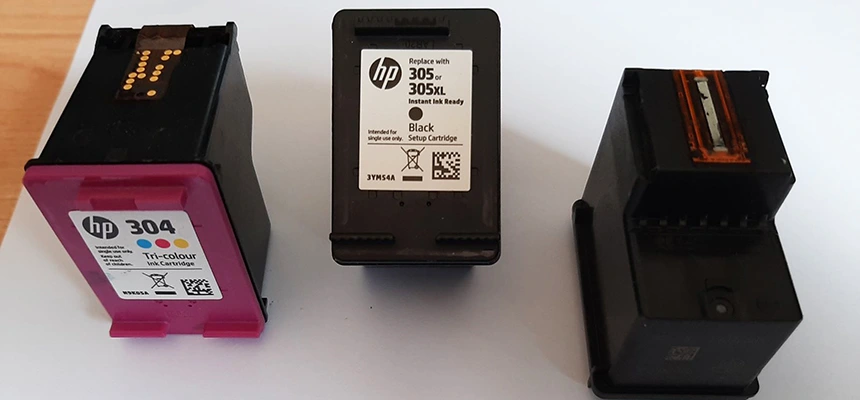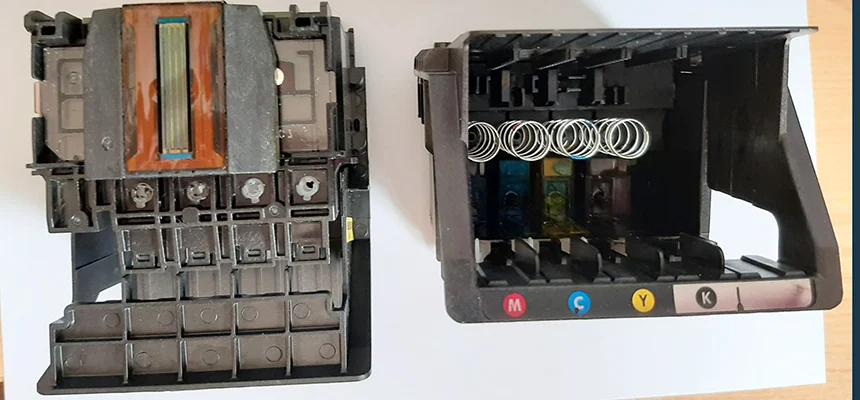Generally, there are 2 types of printers – laser printers which use toner, a type of powder, to print, and inkjet printers that use ink to print. Inkjet printers come in 3 categories.
Inkjet printers with the printhead included in the cartridge have the advantage of being more robust than ones that do not. Hewlett Packard, Lexmark and Canon are the market leaders in these types of printers. They come with a cartridge that prints black only and a second cartridge that has 3 colours, cyan (blue), magenta (pink) and yellow which can be mixed to make all the colours of the rainbow. They are more robust because the printhead which fires the ink out of nozzles is not a permanent part of the printer; when you run out of the ink, you change the entire unit including the nozzles. This is advantageous if you do not print every day as you are unlikely to suffer from the nozzles getting clogged when the weather is hot. If your nozzles do get clogged up and you cannot clear them, you simply change the cartridge, and you can then print again. As the colour cartridges contain 3 colours, you will always suffer from wasted ink as one of the colours will always run out before the other two. This is especially problematic if you print pictures with lots of blue sky and sea, or lots of green grass (yellow and blue). I tend to print a lot of pictures of ducks and Big Bird from Sesame Street so I go through a hell of a lot of yellow ink.
The second type of inkjet printer is the one where the printhead is built into the printer and when you change the ink you just change an ink container. For everyday printing, these printers have a separate cyan, magenta and yellow cartridge and a black cartridge. The black is usually about twice the volume of the colours as black ink is used more than colour ink. Inkjet printers designed to print high quality photos and images can have 8 or more separate cartridges. The advantage of these types of printers are that replacing inks are cheaper because you do not replace the printhead each time. Disadvantages of this system is that the lower price printers have lower quality printheads and these tend to wear out in 2 to 5 years and once they fail, it is either impossible to replace them or they are more expensive to replace than the entire printer. The second major disadvantage of these types of printer is that the printheads often get blocked if they are not used often. Unblocking the printheads involves using a cleaning program on the printer than uses a lot of ink. It is not uncommon to find that it isn’t possible to unblock the nozzles and then it is time to buy a new printer. I have a photo printer for printing my Big Bird pictures.
The third category of inkjet printer has appeared in the past few years where instead of an ink cartridge used to deliver the ink, there is a reservoir which is filled with a large bottle of ink. Epson brought these printers out a few years ago where they turned the normal business model on its head. The printers are quite expensive, and the inks are very low cost. They are designed to print hundreds of pages a week and have the same advantages and disadvantages as inkjets with printheads built in. As they have not been on the market very long it is not possible to say how long the printheads last but early indications are not that long.




